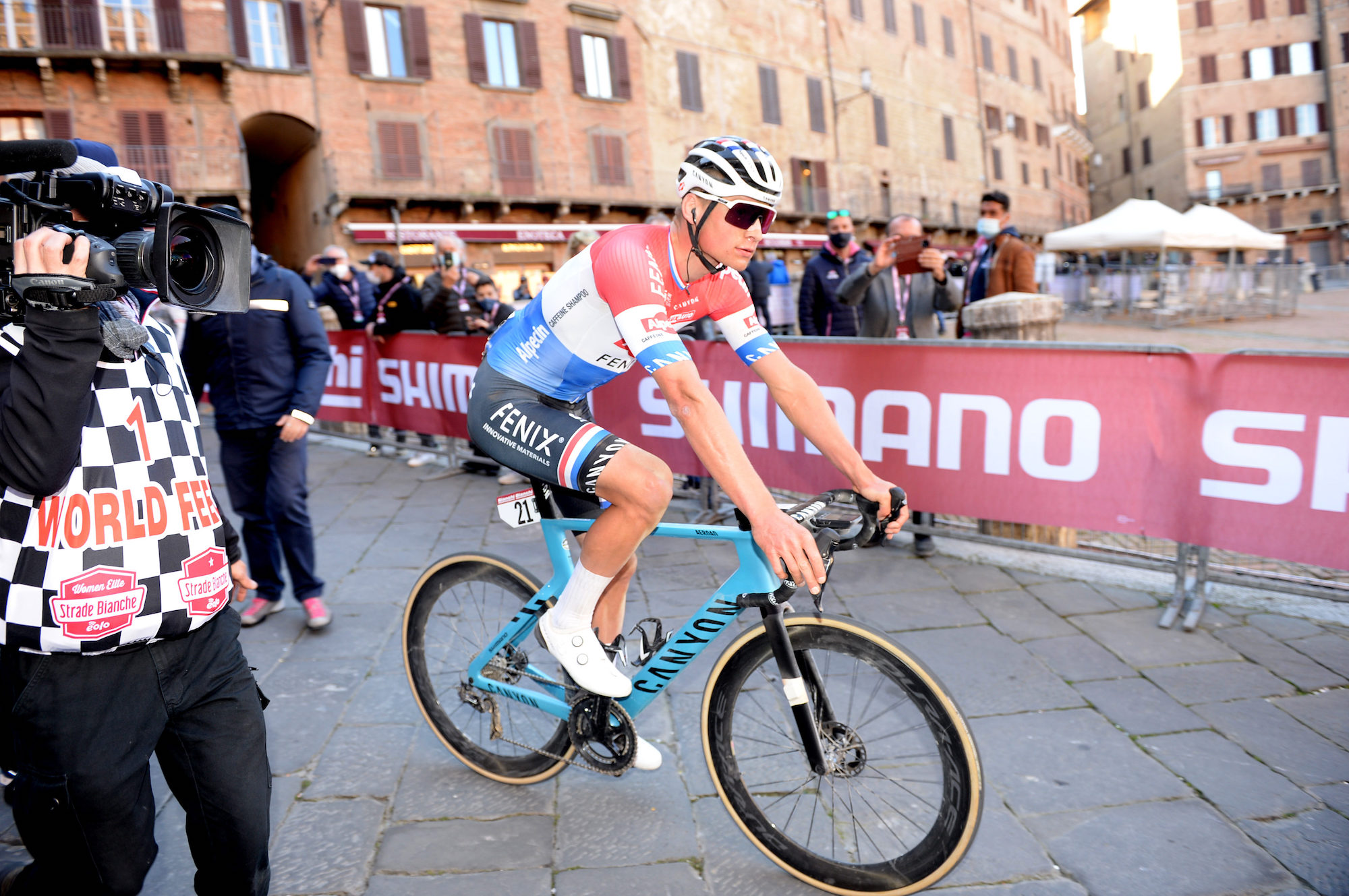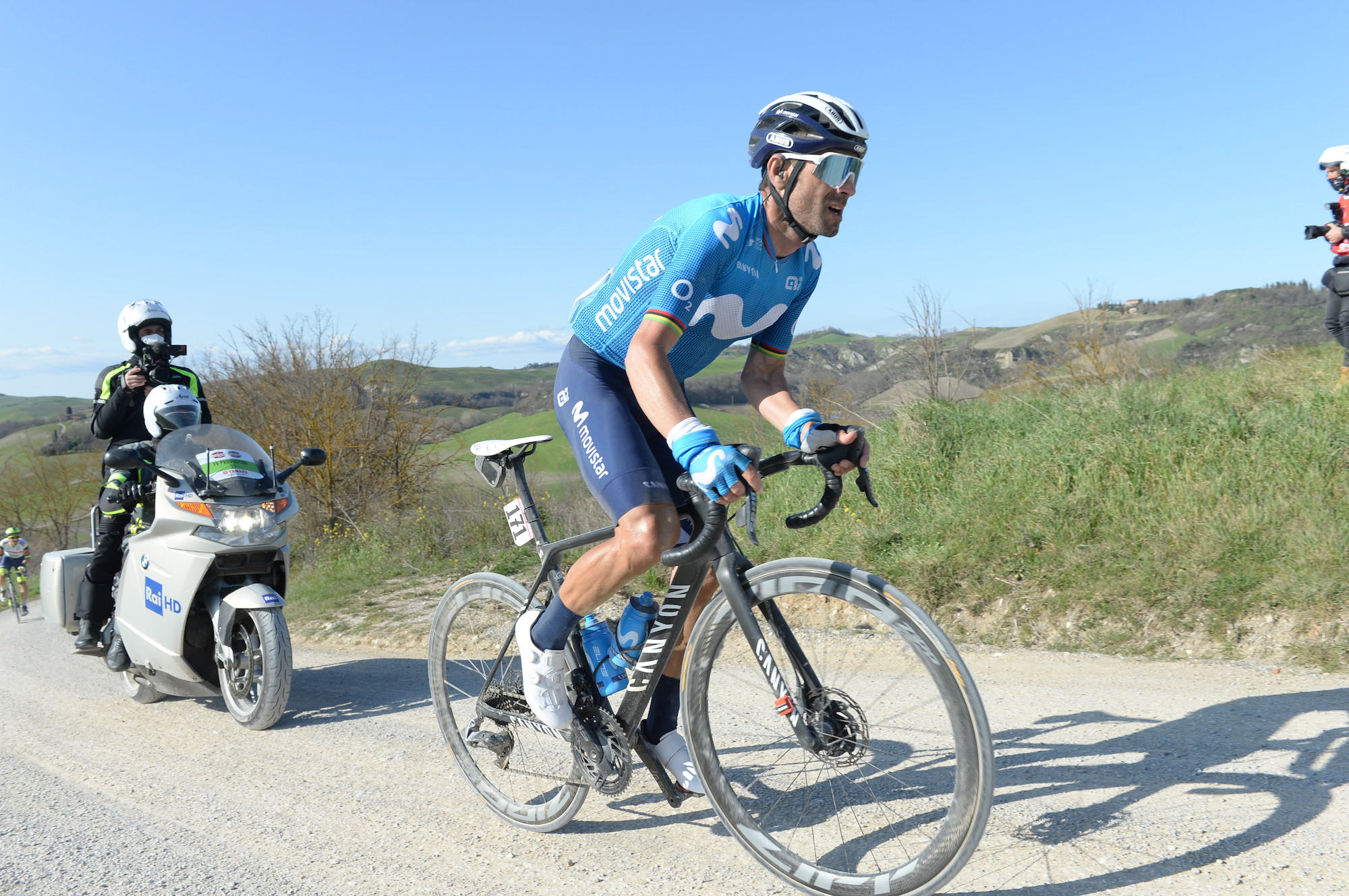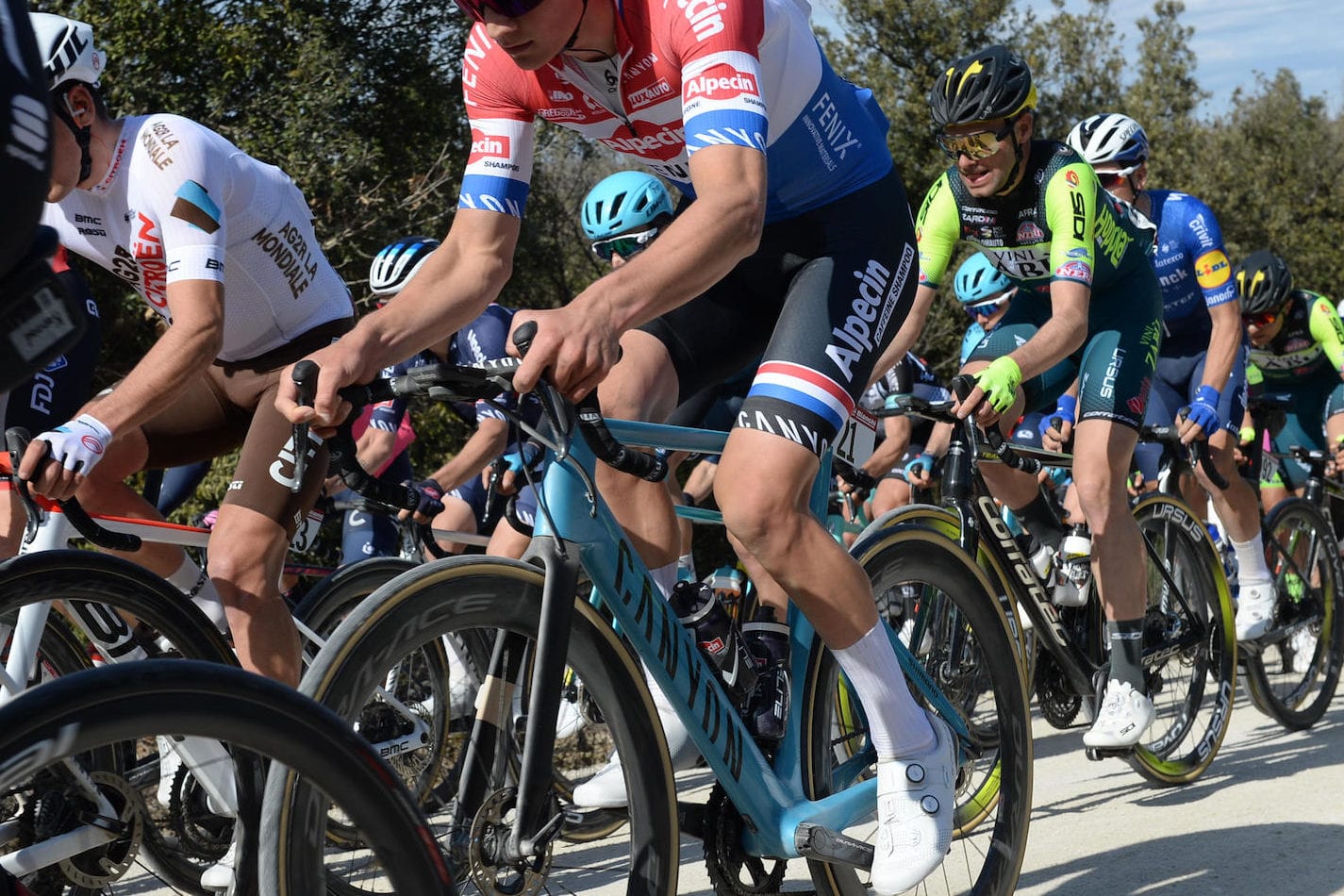Van der Poel’s Aeroad CFR modified to race Strade Bianche
Holes drilled in the Canyon race-winning frame of Alpecin-Fenix rider
 Photo by:
Sirotti.it
Photo by:
Sirotti.it
When Mathieu van der Poel stormed to his stunning win at Strade Bianche on Saturday in Sienna, careful observers noticed a key difference on his bike. Or, rather, that it wasn’t different.
Van der Poel won the iconic Italian race on the same frame that nearly ended in disaster at Le Samyn just days earlier. Mostly.

Integration and custom drilling
The now-infamous images of the Dutch star crossing the finish lines with a shattered handlebar led Canyon to issue a stop-ride order for all Aeroad CFR and Aeroad CF SLX owners. Since the bars are integrated with the frame, fixing van der Poel’s issue isn’t as easy as just swapping out a new set of bars.
Most Alpecin-Fenix team riders, as well as the Movistar and Canyon-SRAM teams opted to ride the lightweight Canyon Ultimate.

Van der Poel was able to go a different route. The same light-blue Aeroad frame he raced at Le Samyn was modified to accept Canyon’s CP00010 bar/stem combo. Since the Aeroad CFR design routes all cables and hoses internally, the team had to find a new way to connect the controls from the hoods to the frame.
That meant pulling out the power tools. Holes were drilled in the downtube of van der Poel’s custom-painted frame, letting the cables into the frame near the head tube. The original light-blue fork was replaced with a mismatched black fork that would work with the CP00010 stem clamp.
Canyon confirmed the customization of the race-winning bike. The German brand also took the opportunity to re-affirm that the stop-ride order is still in place, and that it is still working on a solution for customers. It should go without saying that this is not a modification you should try at home.

Why not just switch frames?
Irreversibly altering van der Poel’s custom baby-blue Aeroad CFR seems much more difficult – and riskier – than just switching bikes. His mechanics would still have had to rebleed brakes and replace cables. Nevermind figuring out how to get the hoses into the frame in the right place. So why didn’t the Dutch rider join his teammates and race an Ultimate?
There are a few possible explanations.
Pro cyclists are notoriously picky about their bike set up. They’re also sometimes more than a little superstitious. Despite having two identical bikes ready at all times, riders are known to have a preference between their “race bike” and the “spare bike” that follows them everywhere on top of the team car. Going into one of the most important races on his early-season calendar, it’s entirely possible that van der Poel wanted to keep as much consistent on his race bike as possible.

Aero matters
There’s also the aero factor. Canyon makes some strong claims about how much a rider can gain from the aerodynamic shaping of the Aeroad frame. Over a long race like Strade Bianche, even small gains can accumulate into a significant advantage.
Canyon’s Ultimate frame is lighter than the Aeroad, it’s possible that van der Poel decided the aero advantage was more significant than the climbing bike’s weight savings on the sprint up to Piazza del Campo di Siena.
Consider that van der Poel’s 4:40:29 winning time is just seven seconds faster than world champion Julian Alaphilippe’s runner-up finishing time. Even a minimal advantage over that time could help the Dutch rider arrive at the harrowing slopes of Strade’s finale with fresher legs. Which, as we saw in the phenomenal women’s finale is incredibly important. Chantal van den Broek-Blaak rode away from Elisa Longo Borghini, a much better climber, because the Dutch rider had fresher legs. Van den Broek-Blaak’s advantage came from strategic riding – making Longo Borghini work in the final kilometers while the SD-Worx rider’s teammates lurked in the chase behind. But the effect is the same.
Whether van der Poel’s preference was for the specific frame, or for the Aeroad’s efficiency, the Dutch rider isn’t saying. What is undeniable is that his victory is another incredible display for the immensely talented racer.
